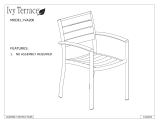
ELEC TRI CAL SE QUENCE
There are 7 indicator lights on the control board:
· WTR-OK (Water OK). Green. Normal =
Glowing. Glows when there is water in the
reservoir.
· PWR-OK (Power OK). Green. Normal =
Glowing. Glows when the control board has
power and is functional.
· Service. Red. Normally Off.
· Freeze. Red. Normally glowing when making
ice.
· Bin Full. Red. Normally Off when making ice.
· LED1. White. Located next to the board’s
Compressor Relay. Normally Glowing when
making ice.
· LED3. White. Located next to the board’s Auger
Motor Relay. Normally Glowing when making
ice.
If the machine is switched off at the mode switch,
but is otherwise ready to go, switching the mode
switch to ON does the following:
· The PWR-OK light glows.
· If there is water in the reservoir the WTR-OK
light glows.
· After 10 seconds the Freeze, LED1 and LED3
lights glow and the machine starts up.
Start Up:
· The compressor relay and auger motor relay
become energized, connecting power to the
windings of the auger motor and contactor coil.
· The contactor is energized, connecting power to
the compressor, and the compressor starts.
· As ice is made it passes between the ice level
sensors but because it is not a continuous
stream it only interupts the sensor’s infrared
beam momentarily. The bin full light remains off
and the machine stays on until ice builds up in
the bin and blocks the path between the
sensors for 6 seconds or longer. When that
occurs the bin full light glows and the machine
shuts down.
Shut Down:
· The compressor relay opens, LED1 goes out.
· The compressor contactor opens
· The compressor stops
· The auger motor stays on for 1 more minute,
clearing out ice in the evaporator, and then
· The auger motor relay opens, LED3 goes out
and the auger motor stops.
The compressor will not restart until 2 minutes or
more have passed after the last shut down.
If the path between the ice level sensors remains
clear for more than 10 seconds the ice machine
will restart.
Control Board Protection Devices
· When the water level in the reservoir falls
below the water level sensor’s tip, the WTR-OK
light goes out and the machine shuts down.
When water refills the reservoir the WTR-OK
light glows and the machine starts up again.
· If the auger drive motor current becomes
excessive the compressor and auger drive
motor will be switched Off and the Service light
will blink. The control board will restart the
auger drive motor in 4 minutes. If during the first
60 seconds after restart the auger motor current
stays within limits, the compressor is restarted
and the machine returns to normal operation. If
the auger motor’s current is excessive within 60
seconds after the restart, the process will be
repeated once more. If during that try the
current is still excessive the machine shuts
down and must be manually reset. The service
light will then be glowing continuously.
To Reset: Disconnect and reconnect power to
the ice machine.
Other Protection Devices:
· If the high pressure cut out switch opens the
machine will stop immediately. It will
automatically reset when the pressure falls
below its cut in point.
· If the low pressure cut out switch opens the
machine will stop immediately. It will
automatically reset when the pressure rises
above its cut in point.
· The mode (on - off) switch is the manual
control for the complete machine, but it is not a
service disconnect.
FME2404 or NME1854
January 2012
Page 12























